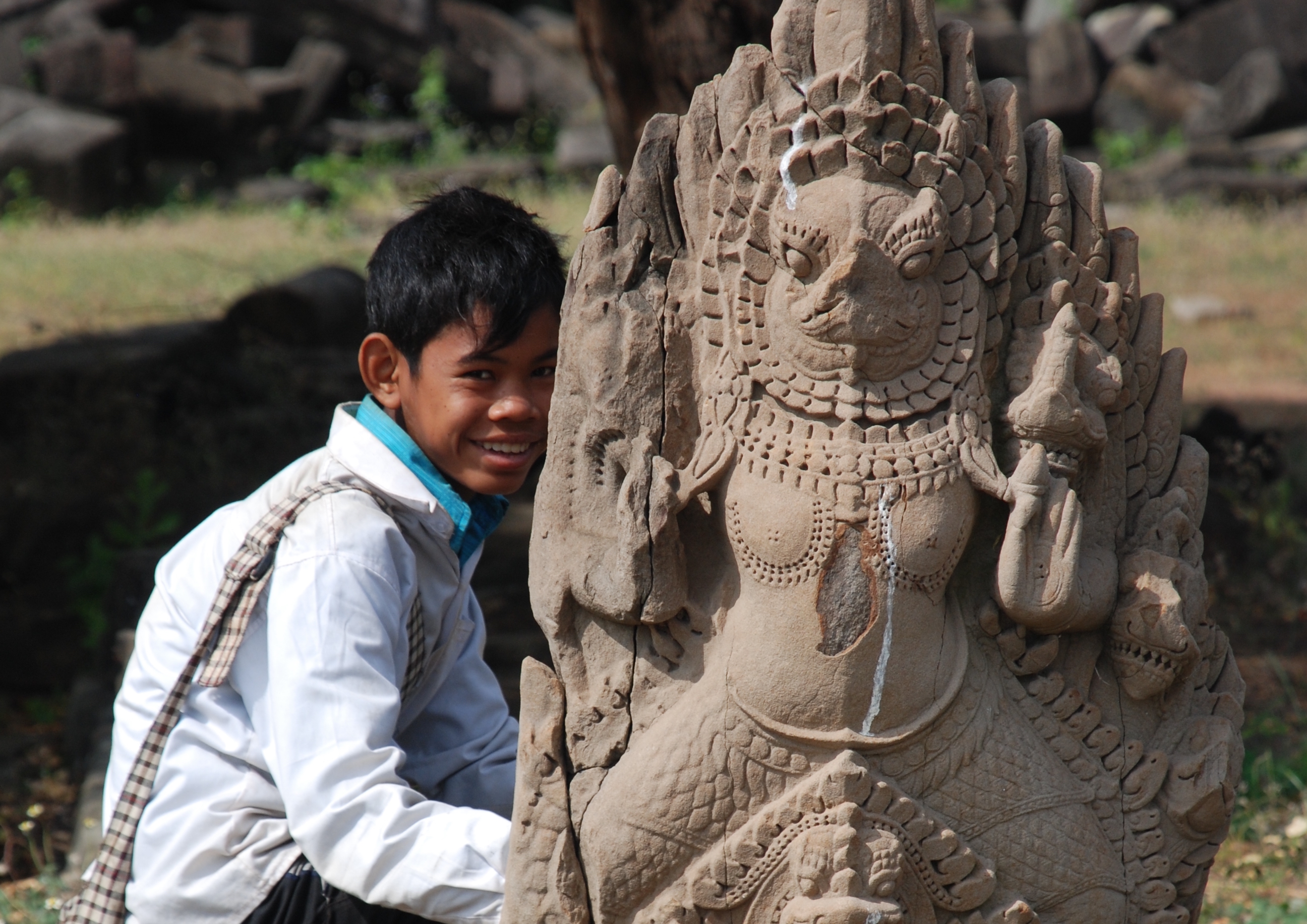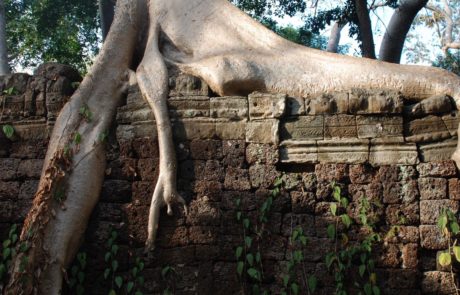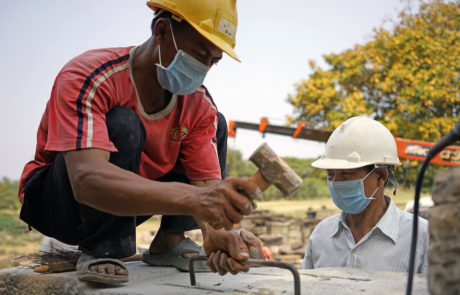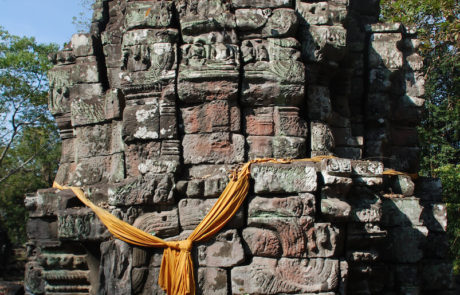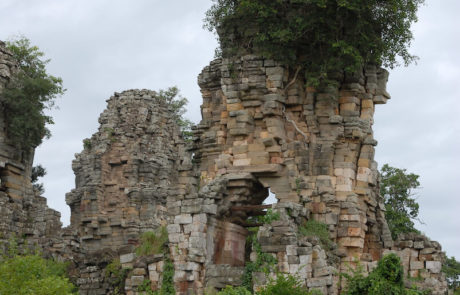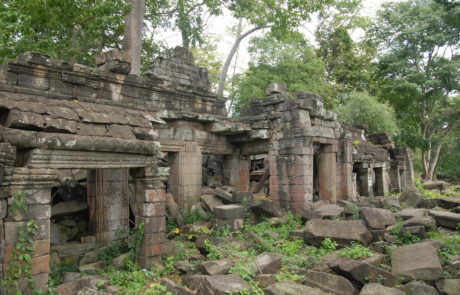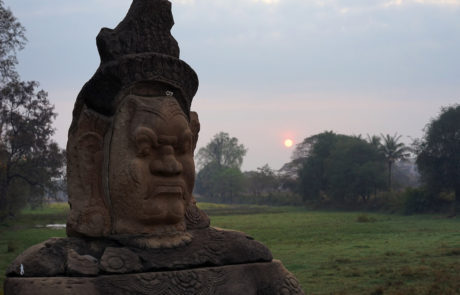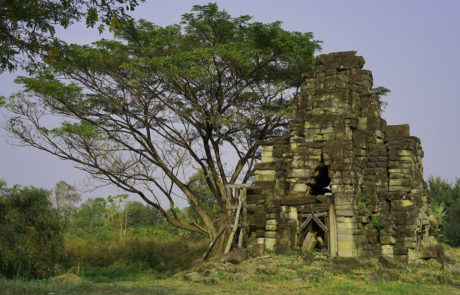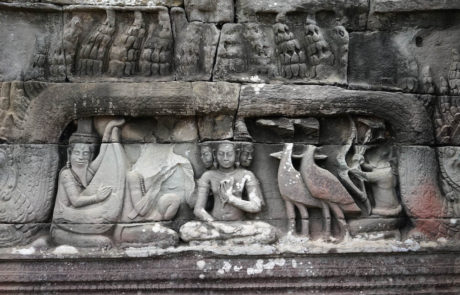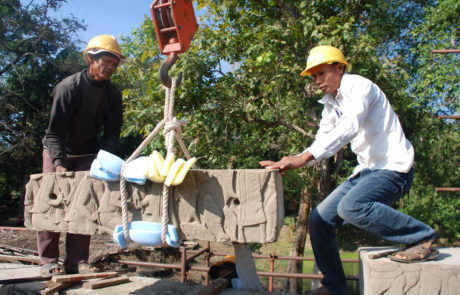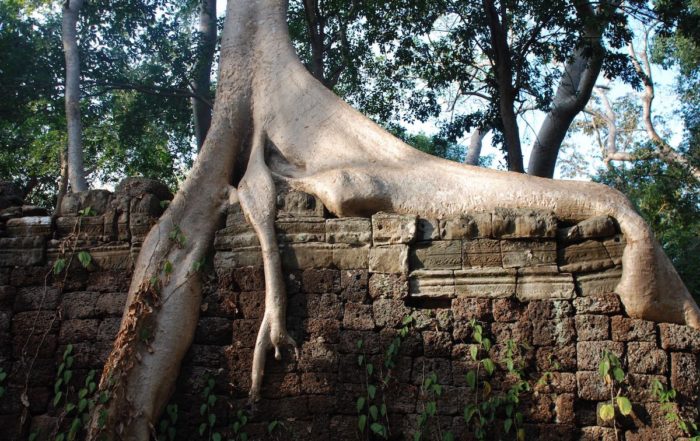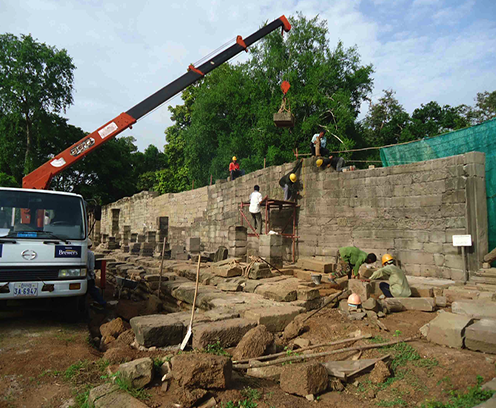Banteay Chhmar, Cambodia
Supporting family-run tourism enterprises and local education by conserving ancient Cambodian temples
One hundred and seventy kilometers northwest of Angkor Wat, tropical jungle has long concealed Banteay Chhmar, an eight temple complex commissioned in the late 12th century by prolific Angkorian builder King Jayavarman VII (1122-1218) in honor of his son who died defending the Khmer Empire. Stone towers peek above the tree canopy here, carved with enigmatic smiling faces believed to be prototypes for those famously adorning Bayon Temple at Angkor Thom. Arcade enclosure walls boast masterful bas-reliefs depicting royal processions, princes wrestling snarling demons and one particularly striking 32-armed Avalokiteśvara, the bodhisattva of compassion.
When Buddhist temples were destroyed or defaced following Jayavarman VII’s death, its remote location spared Banteay Chhmar. Eight centuries of neglect and the fertile jungle however caused extensive damage even before looters crudely assaulted the sandstone with jackhammers in the 1990s, absconding to Bangkok with priceless treasures including four exquisite bodhisattvas. Two have been returned to Cambodia, much more remains at large.
Recognizing the unique opportunity to balance preservation priorities and access with sustainable economic development and other interests of the community, Global Heritage Fund stepped in with the Cambodian Ministry of Culture and Fine Arts to provide master planning, conservation and protection. Cambodian Project Director John Sanday, O.B.E. carried out a two-year conservation training in the Khmer language for an all-local team, the first of its kind. “Though many archaeologists have achieved their lives’ work in the jungles of Cambodia, very few have contributed to the overall wellbeing or the lives and livelihoods of the Cambodian people,” observed Sanday of the landmark initiative. Community guided our efforts at Banteay Chhmar where even a hydrologic survey aimed at understanding the ancient water system, key to the rise and fall of the Khmer Empire, also proved helpful to more effectively supplying water to the village.
Cambodians played a vital role too in transforming this outpost into a thriving tourist destination. Global Heritage Fund partnered with Heritage Watch and Agir pour le Cambodge to create the Community-Based Tourism Board (CBT). The locally managed cooperative receives 100% of the income generated by the heritage site, then shares these funds with the community, supports family-run tourism enterprises and offers education opportunities.
Among the CBT’s 80-plus members is homestay owner Nil Loeurn who arrived in Banteay Chhmar in 1975 as part of Pol Pot’s forced relocations. She and husband Siev Sem joined CBT to help pay their son’s university fees. “At first we thought our home was too simple to be considered,” Sem recalls. Now with tourism up more than 200%, the couple regularly uses their English skills hosting foreign guests. “When we learned the temple would be restored, we were worried villagers would be made to leave as in the past,” admits Loeurn. “We are happy Global Heritage Fund protects the temple as well as the people of Banteay Chhmar.”
Some images courtesy of Denis Grey, Elinor Betesh, and Bob Stanton


